Henry Badgett began his career in visual effects at MPC in 2002. He joined the BlueBolt team in 2010. He has worked on a wide range of projects including Game of Thrones, Johnny English Strikes Again, The Great and Mission: Impossible – Dead Reckoning Part One.
What is your background?
I began my career as a photographer, having studied Architecture at Manchester University. I studied compositing at the Finishing School and got my very first VFX job in roto-prep at MPC.
How did you and BlueBolt get involved on this show?
BlueBolt had done several projects for Scott Free Productions previously including Taboo and Morgan, and myself and BlueBolt Head of 3D Nic Birmingham had both worked with Charley Henley at MPC.
How was the collaboration with director Ridley Scott and VFX Supervisor Charley Henley?
We didn’t see much of Ridley but enjoyed working from his sketched storyboards, as long as Charley was on hand to explain the squiggles. Then we had some really thorough post-viz done by the production’s in-house vfx team. As soon as we saw the early cuts of these sequences with the post-viz, we could see how great they were going to be. Charley has an excellent eye and a collaborative attitude that left room for us to do some creative work.
What was their approach and expectations about the visual effects?
Ridley Scott has a distinctive style, often incorporating atmospheric elements like smoke, dust, and rain into his on-screen visuals. This project clearly followed suit. Additionally, there’s a commitment to maintaining a practical look throughout. While it’s a common starting point in film VFX, some creative teams with smaller budgets tend to cram a lot of effects into a couple of shots, making them stand out in the edit. By contrast, a film like this not only boasts significant VFX set pieces but also integrates subtle VFX throughout the cut. These small touches collectively contribute to an immersive and atmospheric experience.
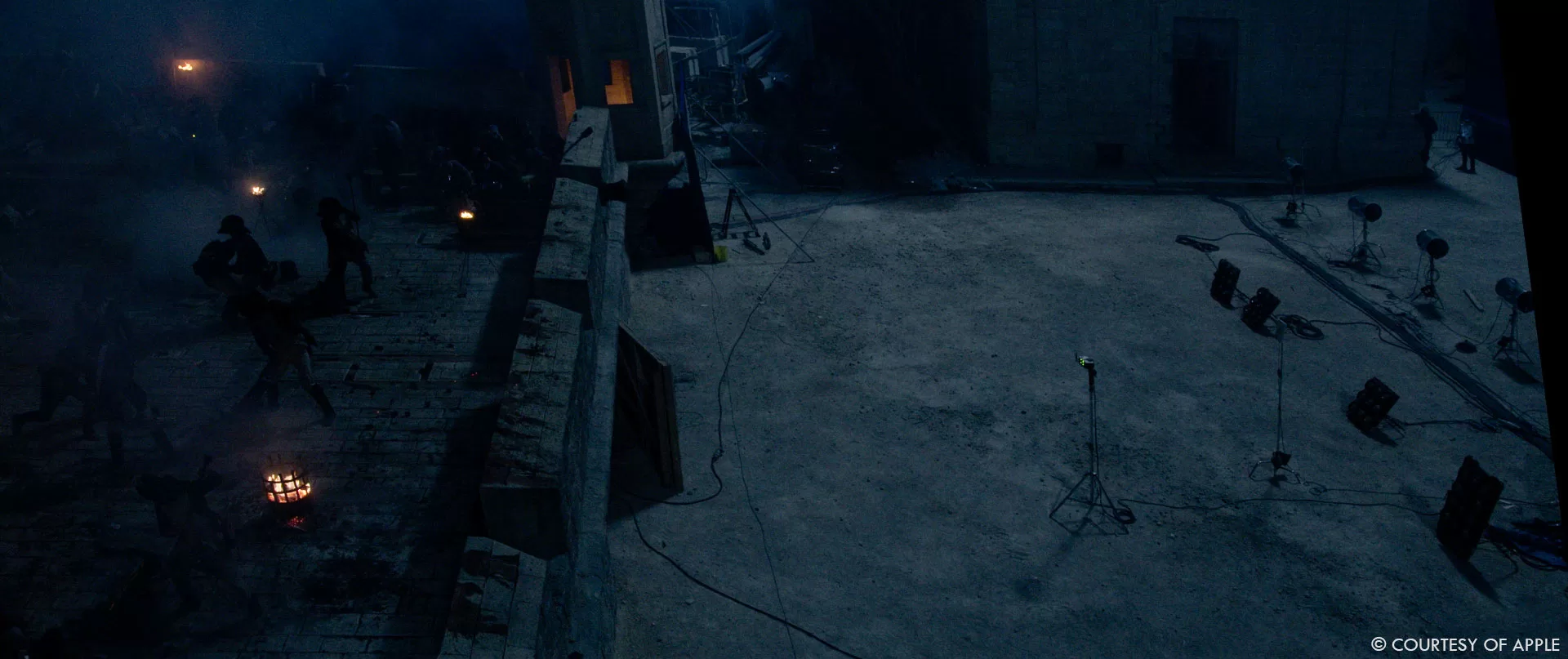
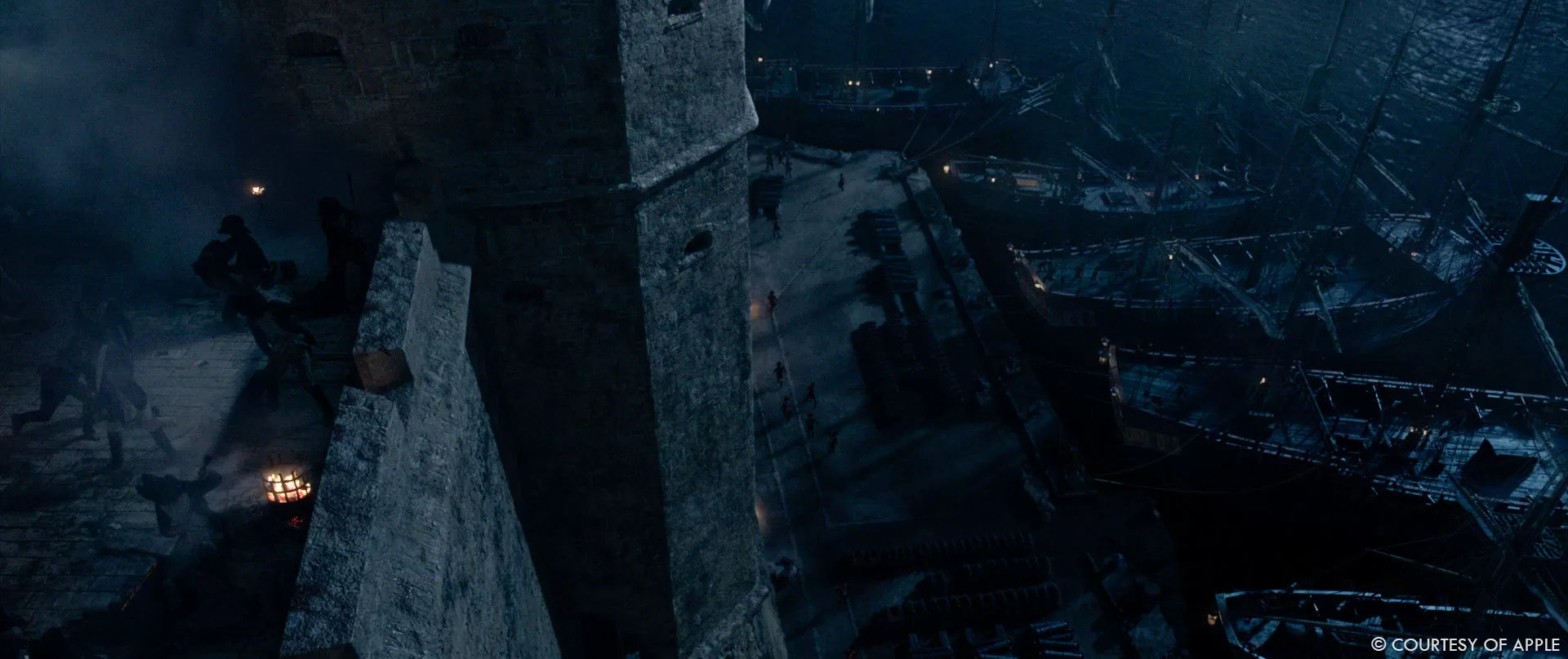
How did you organize the work with your VFX Producer?
A good time to thank my amazing producer Theo Burley who kept the BlueBolt team ship shape and enabled me to concentrate on the visuals. Throughout the project Theo kept in close touch with Sarah Tulloch (Napoleon’s overall VFX Producer) and her team, as requirements changed quite a lot throughout the project as the cut is tweaked and test screenings happen. One of our main strategies was to get early versions of all shots returned to the client in order to avoid surprise feedback at the delivery end of the schedule.
What are the sequences made by BlueBolt?
3 main ones: The siege of Toulon Harbour, the suppression of the Paris riots, and Napoleon meeting Wellington in Plymouth.
Where was filmed the Toulon sequences?
A handful of locations around Malta – real coastal fortifications.
Can you elaborates about the recreation of Toulon?
Environment-wise, It was a difficult layout task to get the geography coherent. In that respect there are a couple of key shots that show Napoleon doing a recce and planning his attack. The rest followed from those. There were 90 shots in the Toulon sequence created by BlueBolt, split between the daytime ‘before’ and ‘after’ and the night time battle.
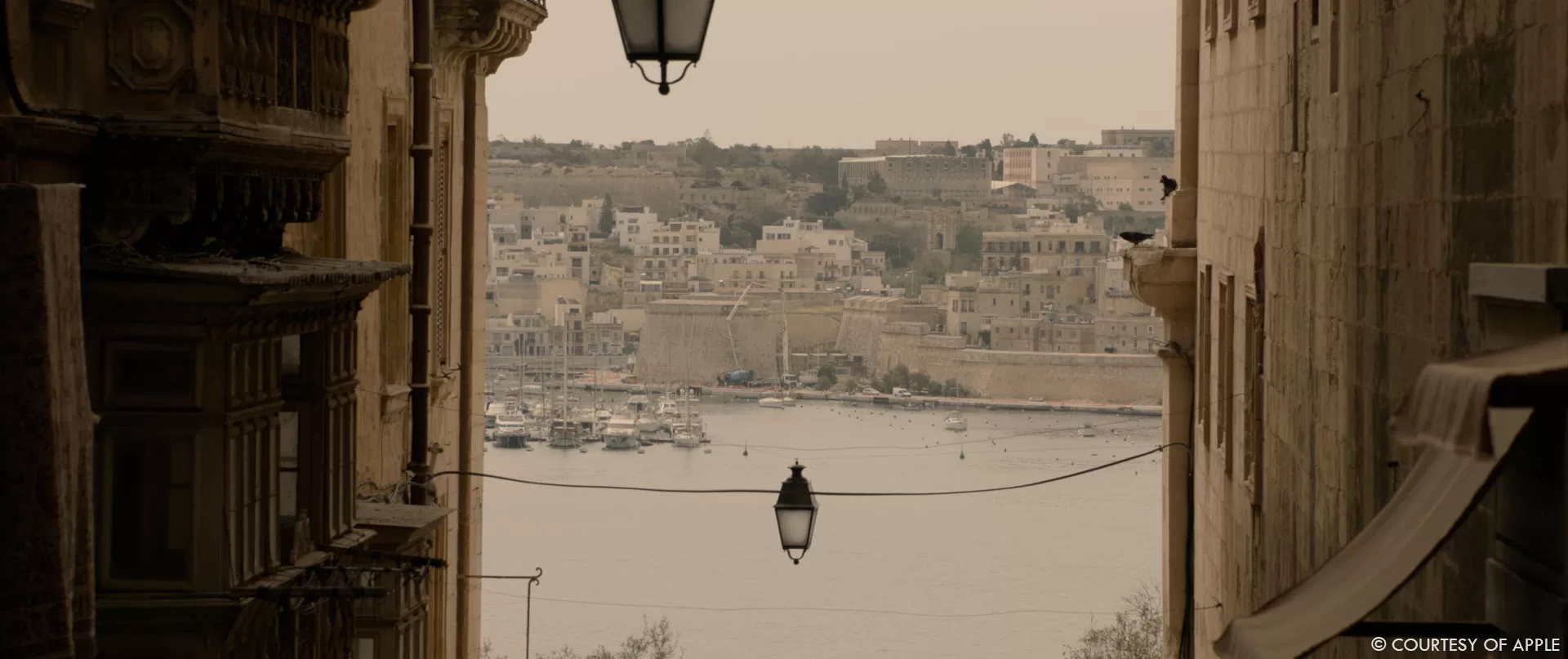
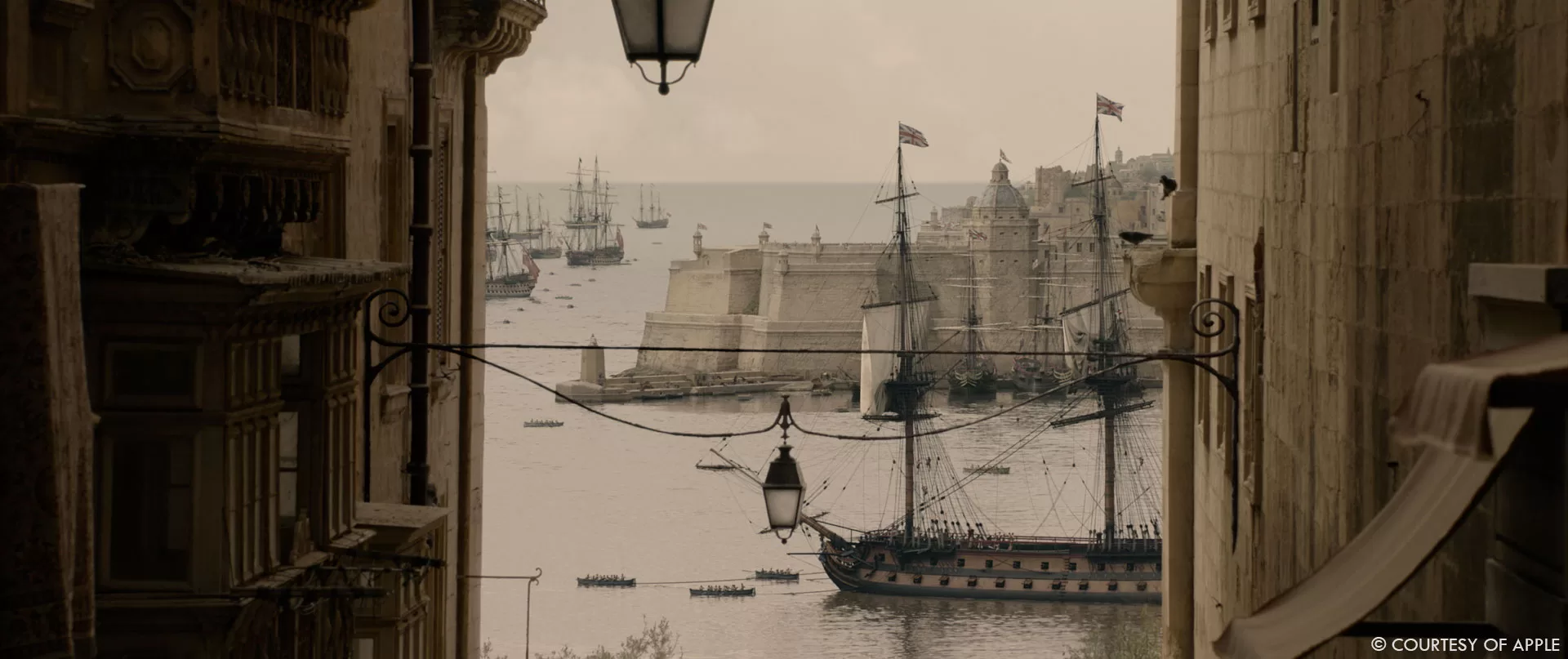
What kind of references and influences did you received for Toulon?
In addition to the storyboards and production post-viz, VFX Supervisor Charley Henley gave us a good amount of paintings and engravings of the actual event from the period. It’s an interesting job to interpret them and figure out what may have been real and what was artistic licence.
How did you create the various boats?
BlueBolt has plenty of experience with historic ships. We built a hero model for each of the six or seven classes of ship and then made 3 or 4 variations of each of those, before adding intricate rigging, sails and flags with rope and cloth sims. We found we had to add a little extra texture than the real ship references displayed otherwise the paint layer on them looked too plastic.
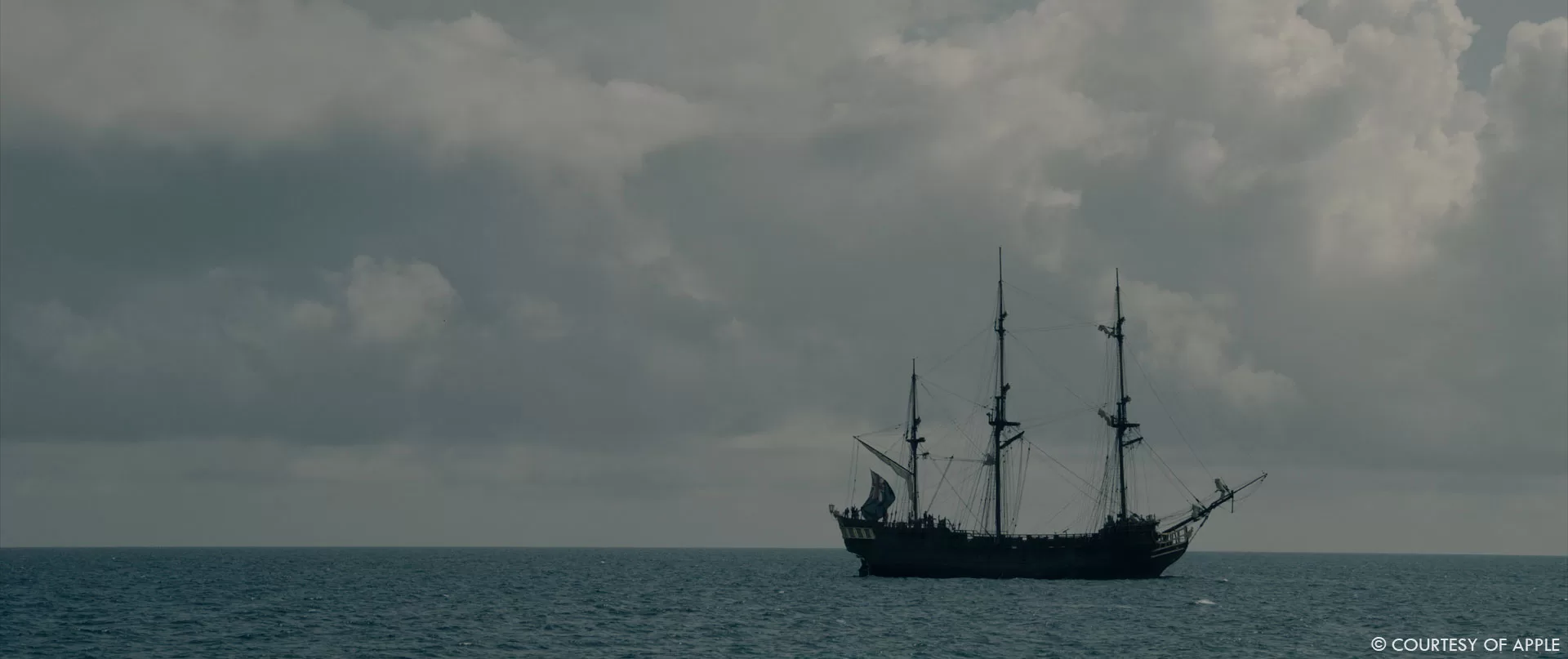
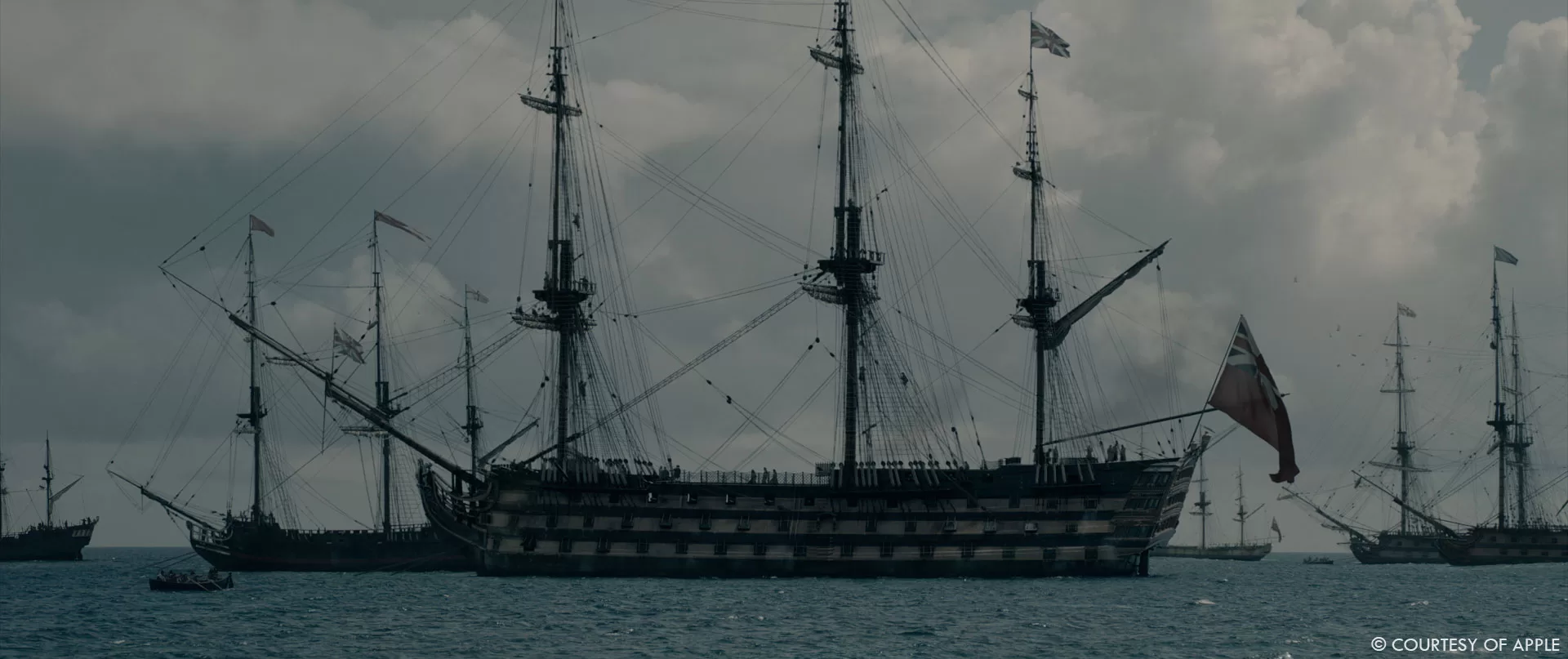
How did you populated the environments with soldiers?
Aside from the shots which were 2D crowd replication, we either had specific elements shot for us from the main shoot, or we would create CG background soldiers and sailors if we needed them from unusual angles. There were 2 shots that needed crowded replication of lots of goats too. They get a mention in the dialogue.
The sequence happens during the night. How does that affects your work?
It was good for us, I think with the nature of the scene with the explosives and everything, it makes the compositing a little easier – you can often lose a matte line in the shadows in a way you can’t with daylight. On the other hand the FX and lighting disciplines needed more work because the FX were acting as lights in the scene more than if it were daytime. So the timing and animation of these mortar explosions needed more iterations to get right, and things had to explode off screen as well as on screen to get the immersive feel.
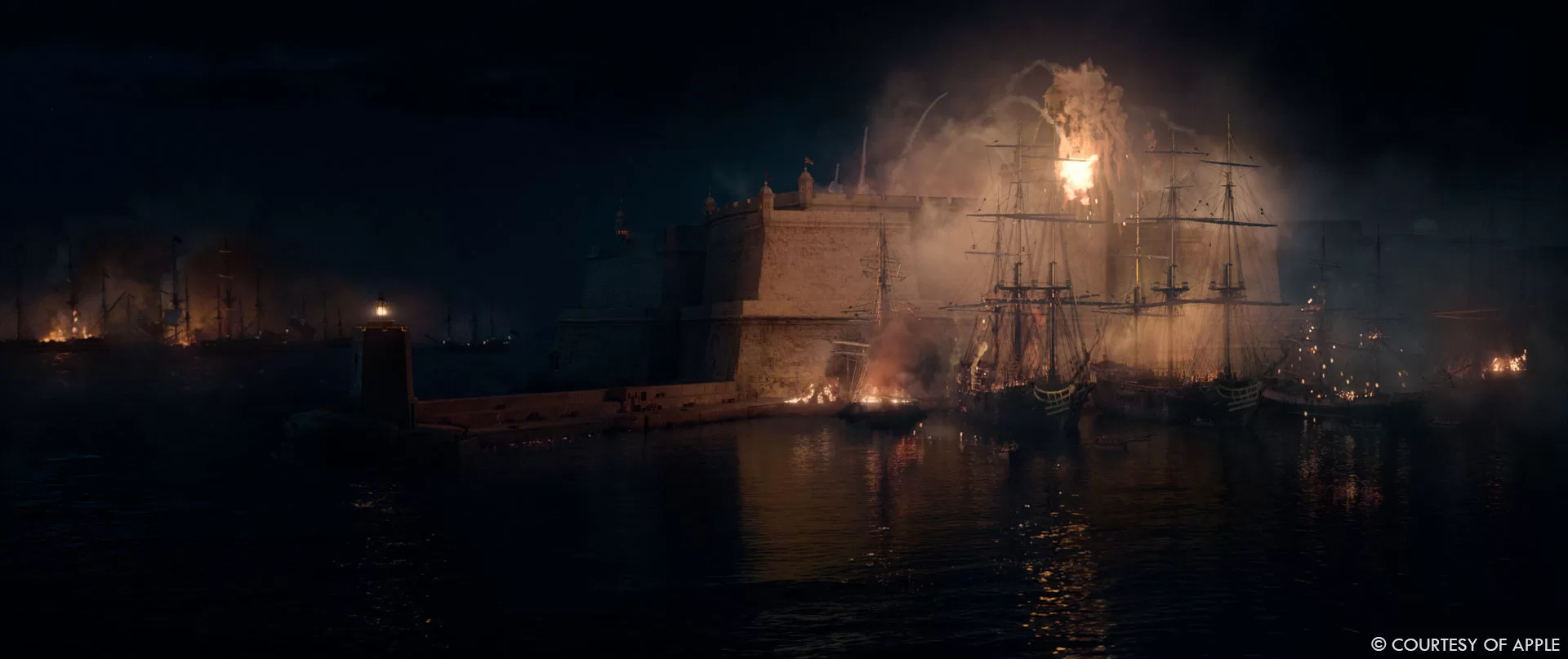
Can you explain in detail about your work on the cannoning of the revolt?
We had some very patient artists putting together the crowd replication layers, painting out jerk-rig wires from an entire row of crowd, and individually tracking on blood patches and removing limbs from victims after the cannon fire. Some gaps were filled with CG crowd that could take more violent reactions. My favourite intervention was replacing the large flags the crowd wave with ones that take the cannon shot and get ripped and tattered, adding bits of floating cloth into the atmosphere. There was a judgement call on how much time to spend on this – we chose not to do a lengthy rotoanim line up and matching cloth sim to get our flags over the real ones – after all this was a ‘cherry on top’ thing – so we just made ours bigger so they hid them underneath. I think it worked really well.
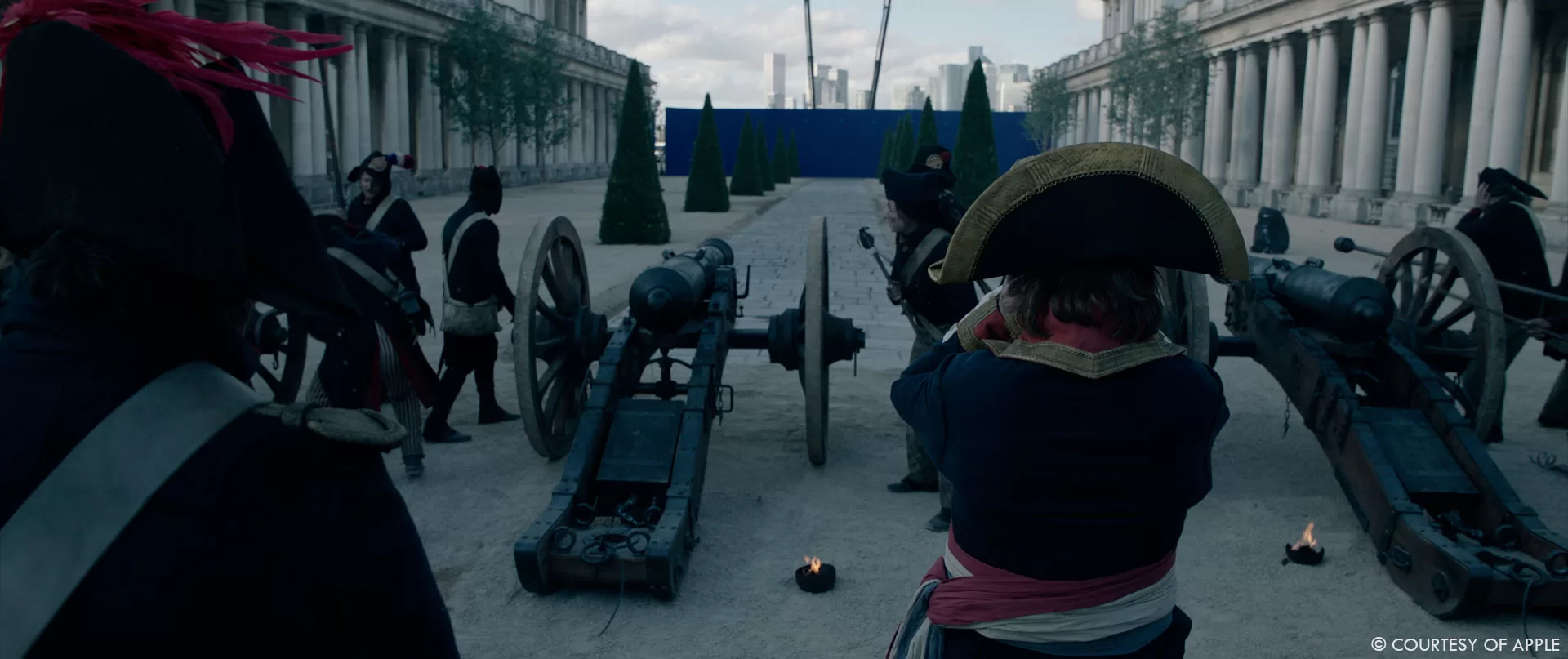
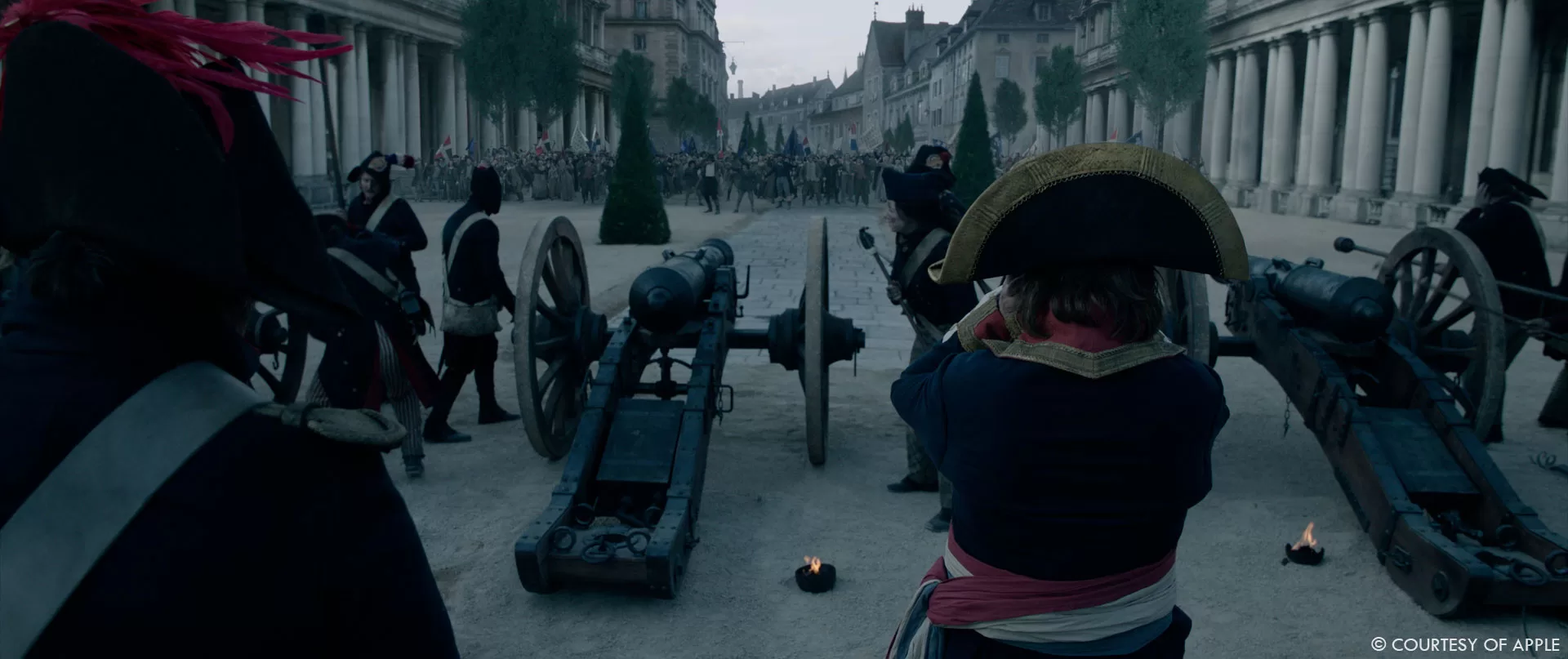
How did you extend the set?
I took the Eurostar to Paris for a day to visit the Louvre Palace. One wing of it was given to us as a key reference for the background behind Napoleon’s soldiers – it had the right period and feel of bureaucracy. We rebuilt it in 2.5D. We gave the Greenwich old naval college a french style mansard 3D roof top up. In the other direction behind the crowd was a DMP that was based on very rough geometry for scale and perspective, based on references from the production’s historical advisor Inigo Minns.
How did you work with the SFX and stunts teams when Napoleon is firing with his canons on the crowd?
Charley Henley’s team covered this on set. We had someone attend a day of motion capture at the Imaginarium studio in Ealing which included stunts doing a variety of actions including a jerk rig for taking cannon fire.
Which sequence or shot was the most challenging?
The final wide of Toulon with the ship (called ‘Iris’) exploding.The background was fully CG, the foreground had a challenging and bright lighting set up, the ships at this point are damaged and drifting, it’s night but the lighting had to be enough to see what is going on, and the creative reference was 18th century paintings of the battle of Toulon full of ships on fire with red skies rather than photography. Here it was difficult to not have it look like a strategy game computer graphic. We got through a lot of different versions of this in comp, exploring different looks to make sure the finale of this great battle scene did it justice. It was such a relief to see it looking so convincing in the cinema.
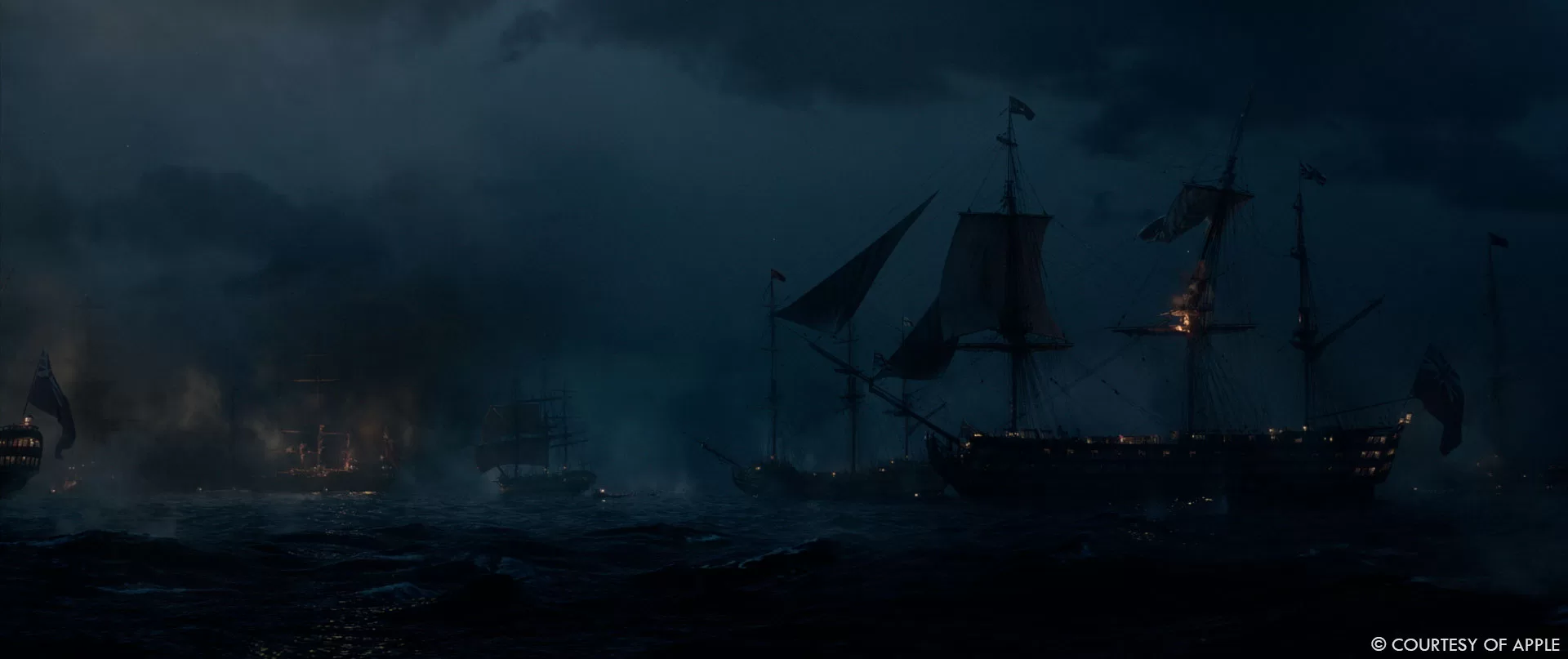
Is there something specific that gives you some really sleepless nights?
Maybe it’s not the most interesting answer, but it’s the render farm management – always hoping that we would come to work in the morning to find a successful batch of overnight renders! But this is a major part of getting a big show like this done.
What is your favorite shot or sequence?
I love the full CG shots of the ships in Toulon harbour – they showcase our ship models brilliantly and I’m very happy with the way they turned out. They were also nice shots to do because the whole team had input on them – 3D, FX, DMP, comp all came together and they looked really good very early on in the process which was rewarding. So either that or the goat herd replication.
What is your best memory on this show?
The conversation after the film was released about ‘Napoleon having no CGI’! We know we succeeded when the VFX are so invisible that it is remembered as being real!
How long have you worked on this show?
7 months. May to November 2022.
What’s the VFX shots count?
126 from BlueBolt.
What is your next project?
I’ve just completed a show called Shardlake. It’s a television series made for Disney+, based on the Shardlake series of historical mystery novels by C. J. Sansom, set in the reign of Henry VIII in the 16th century. The series is adapted by Stephen Butchard and directed by Justin Chadwick and produced by The Forge.
What are the four movies that gave you the passion for cinema?
Superman, Who framed Roger Rabbit, Robocop and The Matrix.
A big thanks for your time.
WANT TO KNOW MORE?
BlueBolt: Dedicated page about Napoleon on BlueBolt website.
Charley Henley: Here’s my interview of Production VFX Supervisor Charley Henley.
© Vincent Frei – The Art of VFX – 2023






